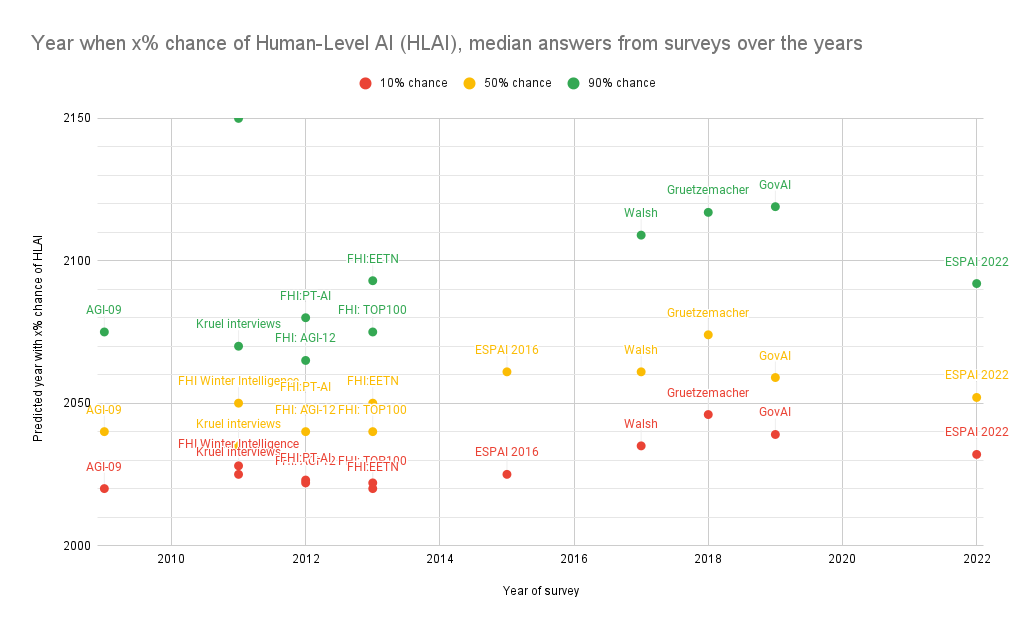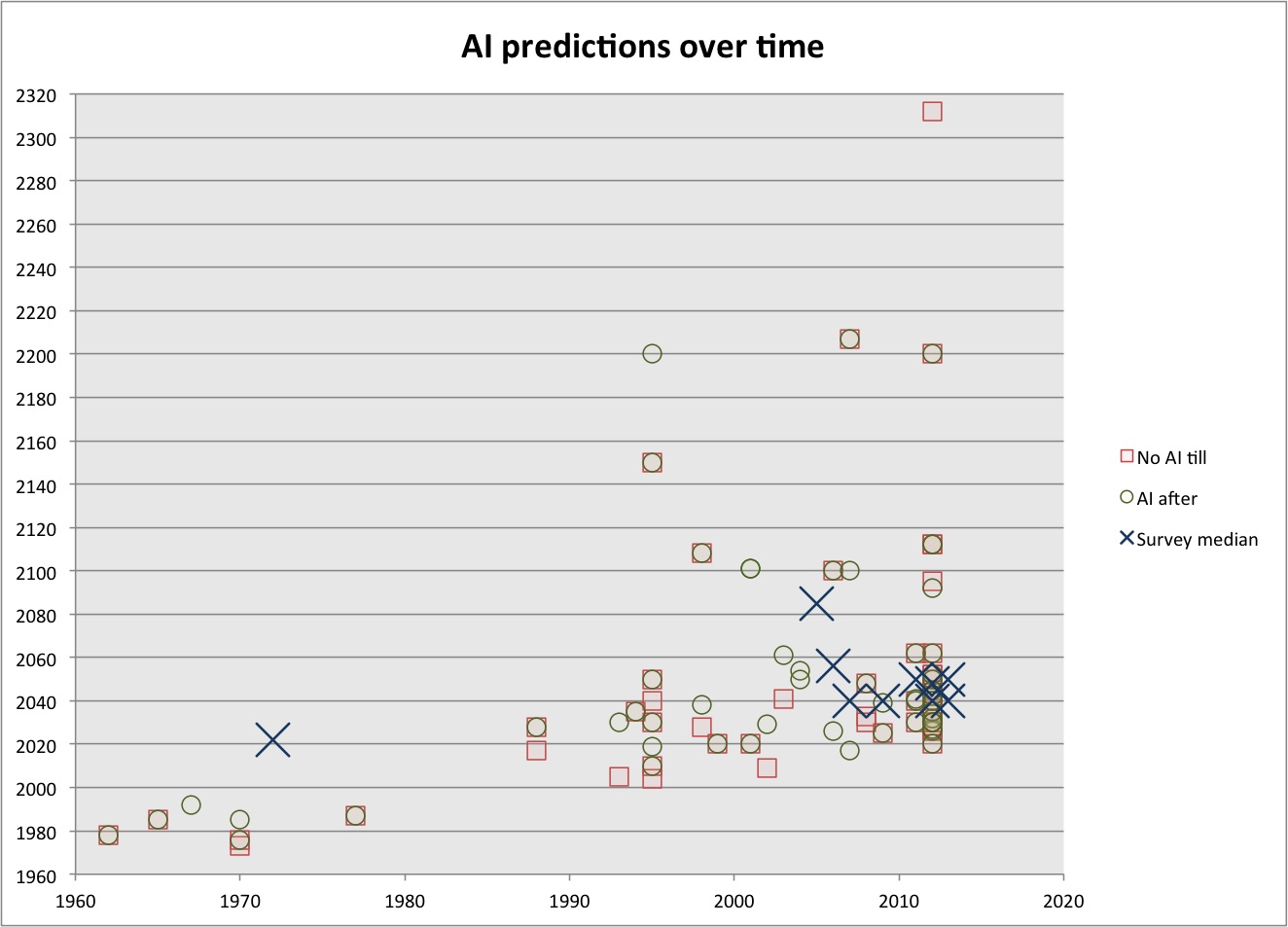Table of Contents
Predictions of Human-Level AI Timelines
Published 05 June, 2015; last updated 8 May, 2023
In the most recent surveys, experts gave median predictions in the 2050s for the arrival of human-level AI. Prediction markets/aggregators currently give median predictions in the 2030s. Individual analyses give a wide range of predictions.
Details
Surveys
(See main page: AI timeline surveys)
We know of 20 surveys on the predicted timing of human-level AI. Participants appear to mostly be experts in AI or related areas, but with a large contingent of others. Most of the surveys asked about AI timelines by asking participants for the year in which they expect a given probability of human-level AI (HLAI). Collapsing a few slightly different definitions of HLAI, the results of surveys that used this fixed-probability methodology are shown in figure 1. Note that asking about timelines in terms of fixed-probabilities tends to elicit shorter timeline predictions than asking in terms of fixed-years.

Prediction markets and aggregators
(See main page: AI Timeline Prediction Markets)
Prediction markets, and prediction aggregators like Metaculus, incentivize forecasters to make good predictions. One limitation of prediction markets is that they cannot incentivize correct predictions where the predicted outcome prevents a payout. Because many believe that human-level AI might lead to human extinction, prediction markets may not work as well for AI timelines as for other questions.
- Metaculus is a reputation-based prediction aggregation engine that uses a scoring system to incentivize accurate predictions and to track participants' performance over time.
- Manifold Markets is a play money prediction market with user-created questions. The play money can be redeemed as a charitable donation.
Analyses
(See main page: List of Analyses of Time to Human-Level AI)
2015 database of public predictions about AI
(Note: this section is about data that was collected in 2015 and does not include predictions made since then)
In 2012, MIRI collected public predictions about human-level AI timelines. In 2015, we expanded on this list to make a database of all such predictions that we knew about at the time, including public statements and survey results. This database contained 1,300 public predictions of when human-level AI will arrive, though 888 are from a single informal online poll. The database includes ten surveys that addressed this question directly (plus a set of interviews which we sometimes treat as a survey but here count here as individual statements, and a survey which asks about progress so far as a fraction of what is required for human-level AI). Only 65 predictions in the database are not part of surveys.

The surveys in the 2015 database tend to have median dates between 2040 and 2050. All six of the surveys which asked for the year in which human-level AI will have arrived with 50% probability produced medians in this range (not including Kruel’s interviews, which had a median of 2035, and are counted in the statements here). The median prediction in statements was 2042, though predictions of AGI researchers and futurists had medians in the early 2030s. We did not attempt to adjust these figures for biases.
Implications
Expert predictions about AI timelines are often considered uninformative. Evidence that predictions are less informative than in other messy fields appears to be weak. We have not evaluated baseline prediction accuracy in such fields however. We expect survey results and predictions from those further from AGI are more accurate than other sources, due to selection biases. The differences between these sources appear to be a small number of decades.

